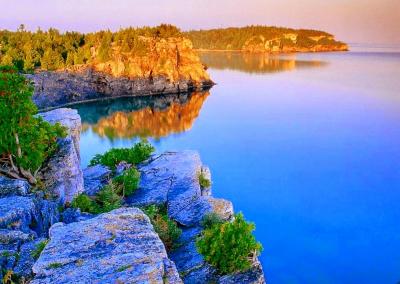Overview
The Great Lakes or the Great Lakes of North America, are a series of interconnected freshwater lakes in the upper mid-east region of North America, that connect to the Atlantic Ocean through the Saint Lawrence River.
Description
Great Lakes, the chain of deep freshwater lakes in east-central North America comprising Lakes Superior, Michigan, Huron, Erie, and Ontario. They are one of the great natural features of the continent and of the Earth. Although Lake Baikal in Russia has a larger volume of water, the combined area of the Great Lakes—some 94,250 square miles (244,106 square kilometers)—represents the largest surface of freshwater in the world, covering an area exceeding that of the United Kingdom. Their drainage basin of about 295,710 square miles (which includes the areas of the lakes themselves and their connecting waterways) extends approximately 690 miles from north to south and about 860 miles from Lake Superior in the west to Lake Ontario in the east. Except for Lake Michigan, the lakes provide a natural border between Canada and the United States, a frontier that was stabilized by a boundary-waters treaty of 1909. It is a source of pride for both countries that there are no fortifications or warships along the boundary.



